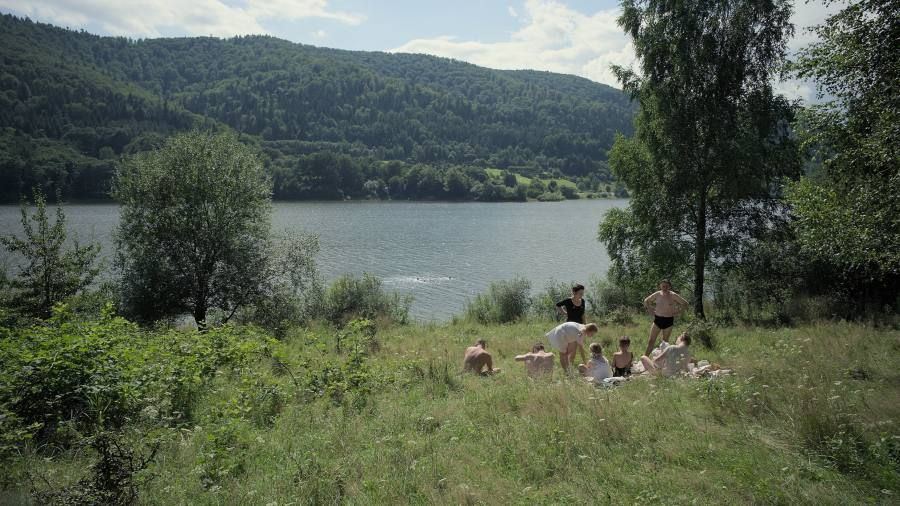The Zone of Interest review - devastating portrait of the commandant of Auschwitz
Cannes can be a place of jolting changes in tone. No sooner had the cartoon Nazis of Indiana Jones been dispatched than they were eclipsed by an all-too realistic kind in Jonathan Glazer’s stunningly good The Zone of Interest. The title is taken from the 2014 novel by Martin Amis, who died on the day of the film’s Cannes premiere — but not much else is. Glazer’s adaptation wisely eschews the book’s comedic and romantic aspects entirely, opting instead for an approach that is ascetic, deathly serious and devastatingly effective.
It begins with a return from a day out in the countryside, the first clue as to the milieu the hairstyles: severe undercuts for the boys, braids and pigtails for the girls. Then a flash of a number plate, the zigzagged SS logo dispelling any doubt. The family home appears at first unremarkable: Hedwig (Sandra Hüller, chillingly precise) fusses primly over domestic affairs; Rudolf (Christian Friedel) comes home from work to play patiently with the children, who scamper into the well-kempt garden. And then it comes into view: the unmistakable watchtower, the barbed wire fence. Smoke billows sickeningly into the garden. The name Höss is the final giveaway: we are at home with the commandant of Auschwitz and his happy clan, who live literally next door to the camp where 1.1mn were killed.
Glazer’s camera maintains a cool detachment throughout, locked-off static shots capturing routine family life and gruesome details alike — blood being washed off dad’s boots, children playing with gold teeth — with no discernible shift in register. This is Hannah Arendt’s “banality of evil” made motion picture with the matter-of-factness of reality TV, master cinematographer Łukasz Żal (Ida) shooting in crisp hi-res digital. Only occasionally and briefly is the aesthetic disrupted in night-time scenes shot in negative that evoke fairy-tales and seem intended to jolt us out of complacency, boredom even.
But the audio tells a different story, Johnnie Burn’s astonishing sound design and Mica Levi’s oppressive synth score coalescing into a sonic masterpiece. The house resounds with a constant low rumble that suggests the murderous machinery at work next door, the trivial household chit-chat punctuated by gunshots and screams. The Hösses never even flinch, the soundtrack of genocide having become mere mood music. Only when it intrudes on their own existence do they react, such as when the children are vigorously scrubbed clean after bathing in a river polluted by waste from the death factory. Yet Hedwig is more upset by the possibility of a job transfer for Rudolf that might wrench them from this “paradise”, while he is perturbed by damage to the lilac bushes that decorate the camp.
The mind boggles and the stomach churns; this is a film that elicits a faint nausea throughout. When Höss is seen retching towards the end, it’s hard not to join him. Glazer has achieved something much greater than just making the monstrous mundane — by rendering such extreme inhumanity ordinary he reawakens us to its true horror.
★★★★★
Festival continues to May 27, festival-cannes.com
Source: Financial Times


